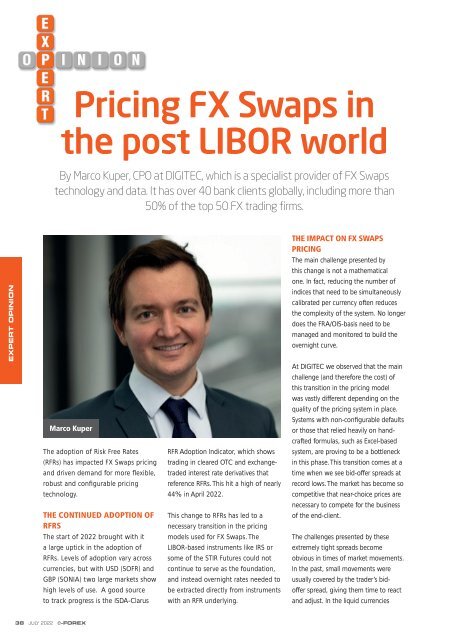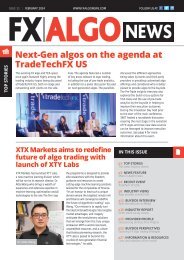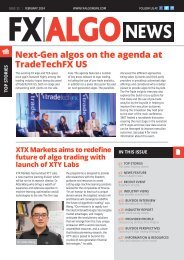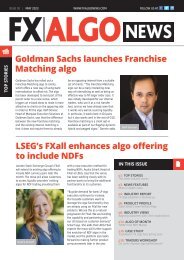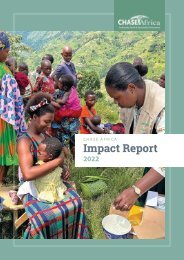e-Forex July 22
Create successful ePaper yourself
Turn your PDF publications into a flip-book with our unique Google optimized e-Paper software.
Pricing FX Swaps in<br />
the post LIBOR world<br />
By Marco Kuper, CPO at DIGITEC, which is a specialist provider of FX Swaps<br />
technology and data. It has over 40 bank clients globally, including more than<br />
50% of the top 50 FX trading firms.<br />
EXPERT OPINION<br />
Marco Kuper<br />
The adoption of Risk Free Rates<br />
(RFRs) has impacted FX Swaps pricing<br />
and driven demand for more flexible,<br />
robust and configurable pricing<br />
technology.<br />
THE CONTINUED ADOPTION OF<br />
RFRS<br />
The start of 20<strong>22</strong> brought with it<br />
a large uptick in the adoption of<br />
RFRs. Levels of adoption vary across<br />
currencies, but with USD (SOFR) and<br />
GBP (SONIA) two large markets show<br />
high levels of use. A good source<br />
to track progress is the ISDA-Clarus<br />
RFR Adoption Indicator, which shows<br />
trading in cleared OTC and exchangetraded<br />
interest rate derivatives that<br />
reference RFRs. This hit a high of nearly<br />
44% in April 20<strong>22</strong>.<br />
This change to RFRs has led to a<br />
necessary transition in the pricing<br />
models used for FX Swaps. The<br />
LIBOR-based instruments like IRS or<br />
some of the STIR Futures could not<br />
continue to serve as the foundation,<br />
and instead overnight rates needed to<br />
be extracted directly from instruments<br />
with an RFR underlying.<br />
THE IMPACT ON FX SWAPS<br />
PRICING<br />
The main challenge presented by<br />
this change is not a mathematical<br />
one. In fact, reducing the number of<br />
indices that need to be simultaneously<br />
calibrated per currency often reduces<br />
the complexity of the system. No longer<br />
does the FRA/OIS-basis need to be<br />
managed and monitored to build the<br />
overnight curve.<br />
At DIGITEC we observed that the main<br />
challenge (and therefore the cost) of<br />
this transition in the pricing model<br />
was vastly different depending on the<br />
quality of the pricing system in place.<br />
Systems with non-configurable defaults<br />
or those that relied heavily on handcrafted<br />
formulas, such as Excel-based<br />
system, are proving to be a bottleneck<br />
in this phase. This transition comes at a<br />
time when we see bid-offer spreads at<br />
record lows. The market has become so<br />
competitive that near-choice prices are<br />
necessary to compete for the business<br />
of the end-client.<br />
The challenges presented by these<br />
extremely tight spreads become<br />
obvious in times of market movements.<br />
In the past, small movements were<br />
usually covered by the trader’s bidoffer<br />
spread, giving them time to react<br />
and adjust. In the liquid currencies<br />
38 JULY 20<strong>22</strong> e-FOREX


